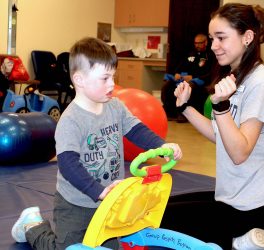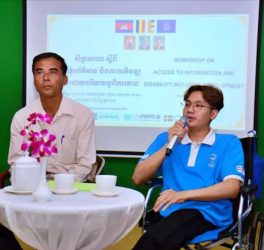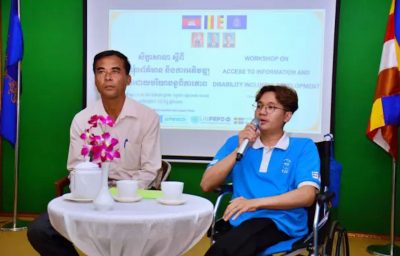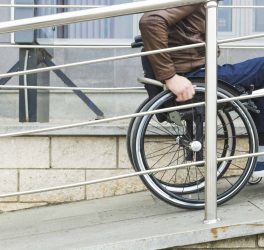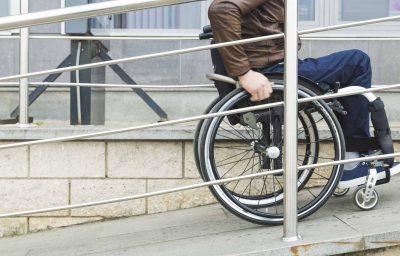Katie Rowley, Guide Dog volunteer and fundraiser from Kirkstall, is teaching sign language to her four-month-old son, Noah.
“He loves watching sign language and trying his best to sign the simplest words,” said Katie.
“His favourite signs are ‘love you’ and ‘friends’.
Katie, 37, was born with minor hearing loss and lost her hearing completely at the age of two.
She also has Usher syndrome, myopia and astigmatism.
When Katie was 23, she lost vision in her left eye and, over time, has progressively lost vision in her right eye.
She did have a guide dog, Domino, but he retired due to poor health in 2020.
“Without the support of Guide Dogs, I don’t know where I would be,” she said. “I will forever be in their debt.
“Domino was one of a kind – he understood sign language and he gave me confidence, independence and freedom. We travelled the country and even abroad.
“Guide Dogs throughout lockdown have been a rock, keeping me up to date with how Domino was doing after he was rehomed, and keeping in touch with me to make sure I was OK and managing, providing information on different things such as online meets, and so much more.”
Katie said has written two books: one on confidence and guide dog refusals – where a person with a vision disability is refused entry due to having a guide dog – and another on communication barriers and mental health.
She hopes to raise awareness of the challenges faced by people with vision and hearing disabilities, and some misconceptions.
“Don’t presume that we can’t do things for ourselves,” she said. ” I’ve had many comments on how can I write a book if I’m deaf and blind?
“My laptop is adapted so I have a built-in magnifier, yellow stickers on the keyboard, and I’m able to zoom in on things like word documents. Also, not every deaf blind person uses sign language.
Not all deaf blind people have complete losses. Many of us have some useful vision or useful hearing – for example I have a cochlear implant so while it’s not a lot and it’s more like a robot or computerized voice, it does give me some hearing.”
Katie said she was very concerned about how she would cope with being a mother.
“It was an adjustment to begin with due to my sight loss,” she said. “I was anxious about if I would do things right and things like would I be able to change his nappy properly?
“Would I be able to bath him safely? Would I be able to make his formula properly? Would I be able to wash his bottles properly? Would I be able to take him out safely?
“There are so many adjustments to make with dual sensory loss, and over the last few months I’ve had to learn new coping mechanical styles.
“For example, I have a vibrating baby monitor but I also have purchased a video baby monitor as being deaf I can’t hear but do have limited vision. It’s about adapting to my individual needs.”
Guide Dogs said there are an estimated 22,000 people living with a vision disability in Leeds. It’s predicted this number will increase by 16% by 2023.
It costs approximately £55,000 to train and support a guide dog partnership throughout the life of the dog.
As well as breeding and training costs, Guide Dogs covers the cost of food, vets’ bills and ongoing training after the dog is partnered with someone with sight loss.
Guide Dogs relies on donations.



